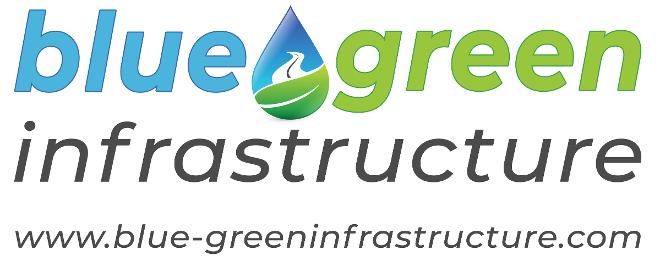
INTRODUCING THE Tree nurturing SYSTEM™

Disruptive Climate Resilience Technology
Imagine a system that works like a sponge in nature. It soaks up rainwater, cleans it, and gently releases it to where it's needed most - our urban trees and plants. This smart system not only waters the greenery but also lets the excess water seep down to replenish underground water sources.
The combined systems of soil, water, and vegetation, known as blue-green (living) infrastructure, have the ability to moderate the release of water during periods of heavy rainfall and provide an extra source of fresh water during heatwaves. This aids in fostering vegetation growth, expanding tree canopy coverage, and lowering urban heat temperatures.
Reinstating the sponge function in urban landscapes yields a multitude of benefits. These include increased resilience to floods and droughts, reduction of erosion, enhancement of biodiversity, regulation of local temperatures, and improvement of social amenities. It also promotes health and well-being, ensures clean water availability, and boosts local economies.
Unlike conventional drainage systems, the Tree NurturingSystem™ is a decentralised approach. This decentralisation significantly reduces the displacement of flows and volumes, mitigating the negative impacts associated with rapid runoff and pollutant mobilisation by a magnitude of scale.
Background: The Impact of Drainage on the Natural Water Cycle
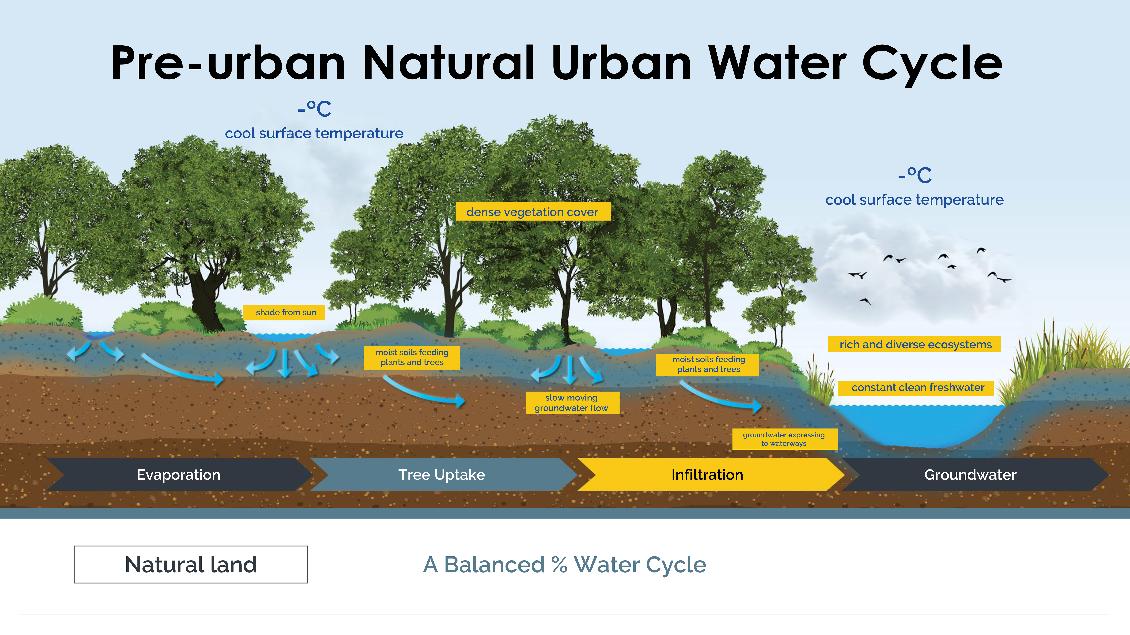
Conventional drainage, a centralised approach that focuses on removing water from a single, central point, exacerbates the displacement of flows and volumes. This displacement can lead to a variety of environmental problems, including soil degradation, water pollution, and loss of biodiversity.
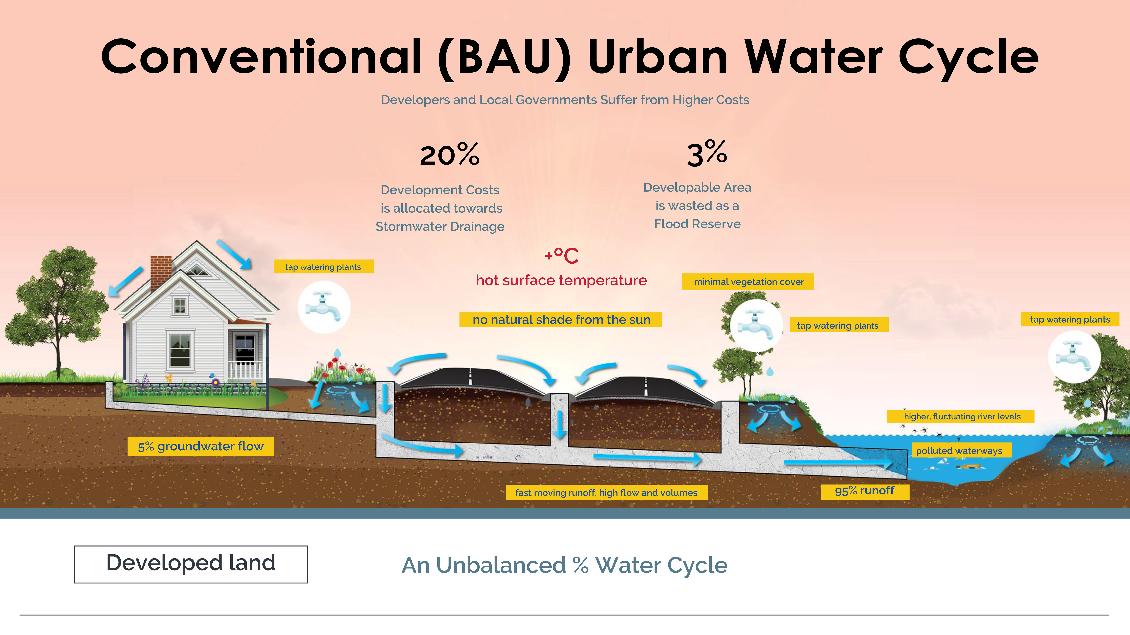
Drainage, defined as the natural or artificial removal of a surface's water and sub-surface water from an area, is a crucial aspect of urban planning. Traditional urban drainage systems, while efficient at removing water from urban areas, have significant drawbacks. They enable quick and easy mobilisation of pollutants and contaminants, which are collected and conveyed downstream, detrimentally impacting the health and function of the receiving environment. Moreover, these systems starve upstream catchments of rainfall, leading to dead and barren soils. Groundwater levels fall deeper and deeper, and starved of water, these soils exhibit no oxygen, other minerals, and elements. Subsequently, vegetation root systems are shabby and unable to support and sustain life, these soils become hard and compacted.
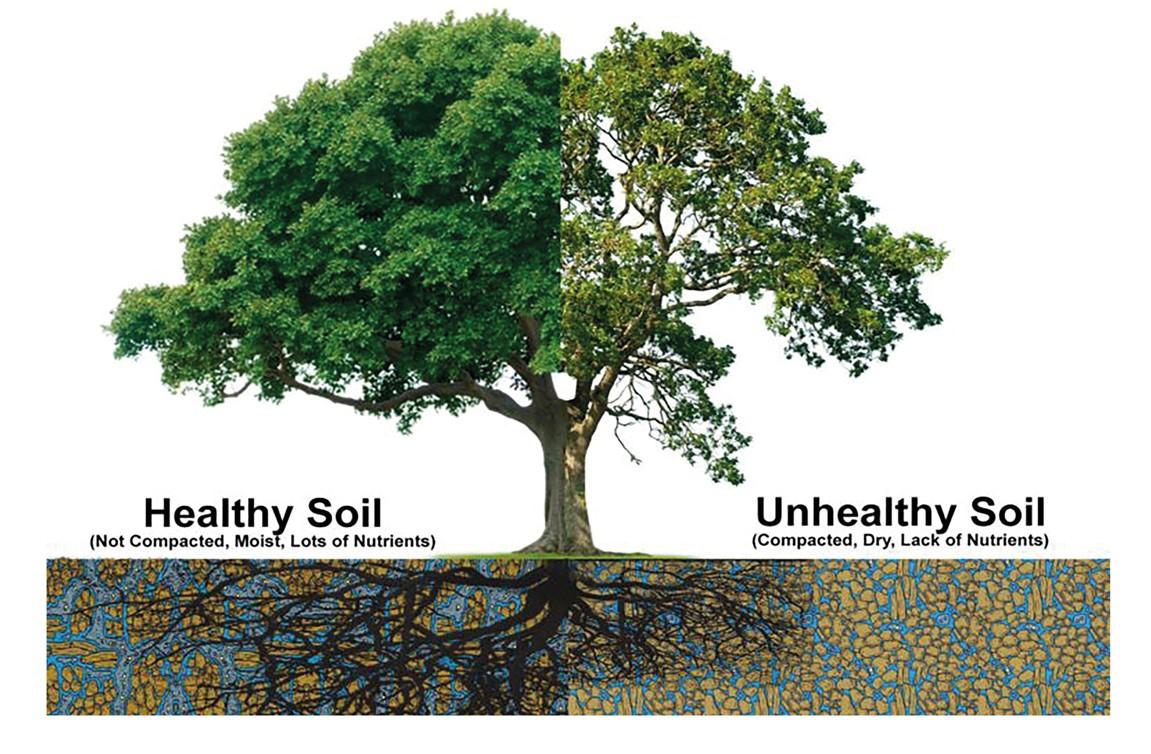
The impact on urban trees is particularly severe. Many urban street trees are planted in shallow graves, surrounded by hard compacted engineered soils. The root zones of these trees lack water, oxygen, and minerals, leading to declining health and immunity towards pathogens. Trees easily become infected with pathogens such as phytophthora, which are conveyed within overland flows, deposited onto tree root runners, or concentrated at captive points along the flow path. Being the only source of water for uptake through the root zone, the pathogens easily attack the tree cell structure, slowly and surely leading to certain death. Without a healthy dense root mass, trees lose stability and support to hold the trunk and canopy above, leading to failure and collapse. In many urban areas, this results in the death of innocent community members.
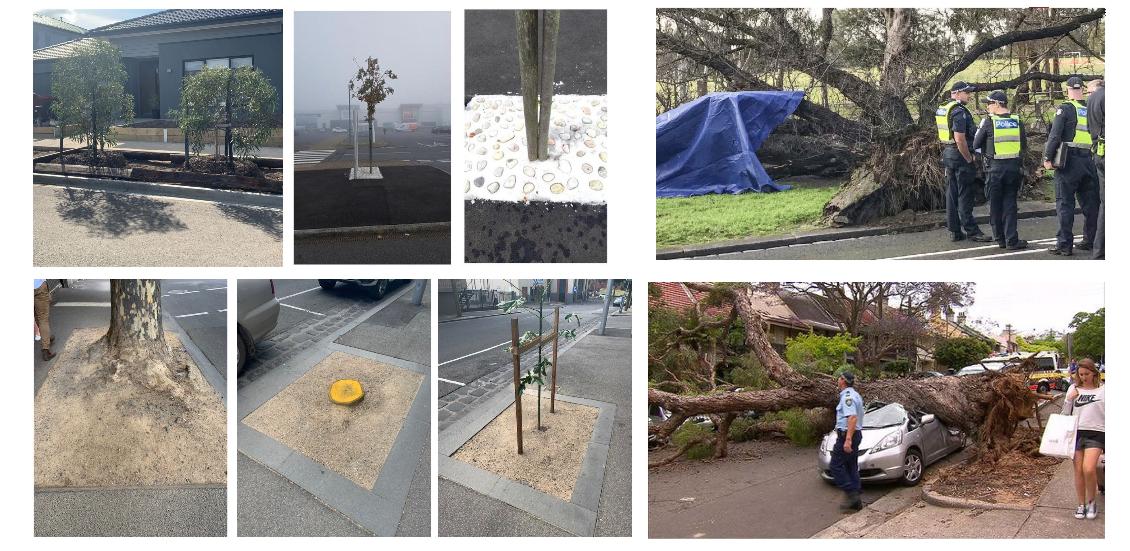
The traditional approach to drainage has become standardised across the globe, driven by cost and efficiency considerations. However, this approach overlooks the critical role of the natural water cycle in maintaining healthy urban ecosystems. By disrupting the natural water cycle, traditional drainage systems contribute to a range of environmental problems, including soil degradation, water pollution, and loss of biodiversity.
In addition, the adoption of a traditional drainage approach results in a significant end of line drainage maintenance regime along with costly, time consuming and insufficient manual irrigation practices.
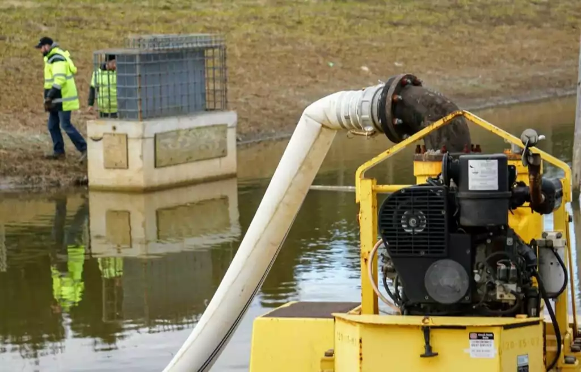
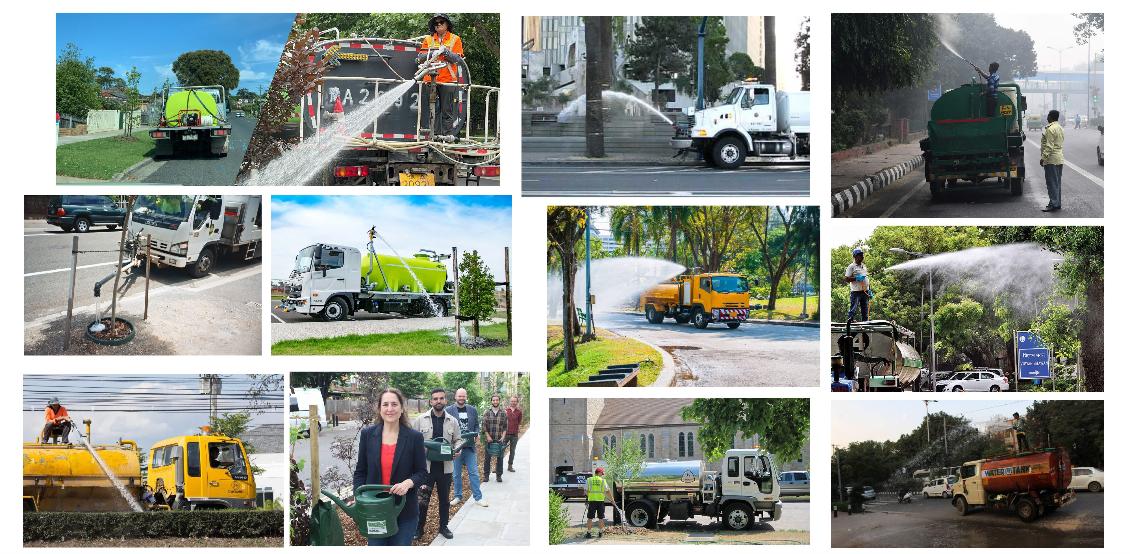
To address these challenges, a paradigm shift is needed in urban stormwater management. This shift involves moving away from traditional drainage methods and embracing innovative approaches that promote the health and longevity of soil, vegetation, and water systems. Our Tree NurturingSystem™ aims to replicate natural processes, promoting the infiltration and retention of stormwater at the source, rather than rapidly removing it from urban areas. This approach reduces the volume and velocity of stormwater entering traditional drainage systems, mitigating the negative impacts associated with rapid runoff and pollutant mobilisation.
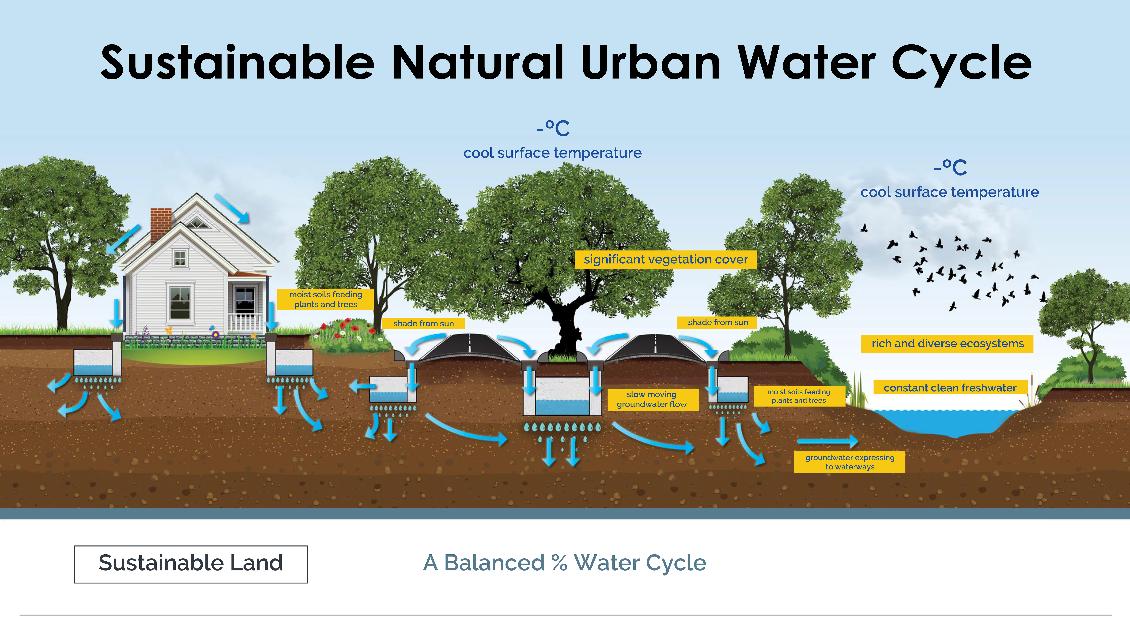
WHAT MAKES THE TREE NURTURING System™ DIFFERENT FROM OTHER TREE PIT DEVICEs?
The Tree Nurturing System™ distinguishes itself from other tree pit devices with its exceptional high inflow rate and comprehensive approach to stormwater management, enhancing the health and longevity of soil, vegetation, and water systems.
Meet the EnviroKerb™ from Precast Permeable Concrete (PPC) Australia (www.envirokerb.com.au). It's like a powerful, eco-friendly sponge made from special concrete. Placed along kerbsides, it acts as a super filter for rainwater, cleaning it as it flows. This clean water then reaches the trees and plants, helping them thrive. What makes it stand out? The EnviroKerb™ showcases an impressive inflow capacity of about 30,000mm per hour or 500mm per minute. This high inflow rate significantly surpasses other tree pit systems, which often exhibit substantial bypass flows and very low inlet capacities.
More notably, the EnviroKerb™ effectively filters stormwater runoff before it enters the tree pit, providing a treatment efficiency that significantly surpasses other tree pit systems.
Studies indicate that porous media, with its voids that collect oxygen, nutrients, and minerals, supports algae and bacteria populations. These organisms feed on runoff contaminants, including hydrocarbons, resulting in the removal of approximately 98% of pollutants from stormwater runoff.
When runoff is intercepted under a shallow sheet flow regime, the constituents of the runoff are microscopic. This minimises the chance of constituent accumulation and ensures high flow rate performance over an extended period.
The EnviroKerb™ Stormwater Pollution Prevention Inlet (ESPPI) component of the Tree Nurturing System™ acts as a protective barrier for our waterways and oceans, safeguarding them from plastic, litter, and other substantial pollutants. Unlike conventional drainage systems, gross pollutants do not enter a drainage pit and pipe system. Instead, they remain in the tray of the porous kerb. The Tree NurturingSystem™ significantly reduces maintenance costs compared to pit and pipe drainage infrastructure, with only a street sweeper required for the collection of gross pollutants.
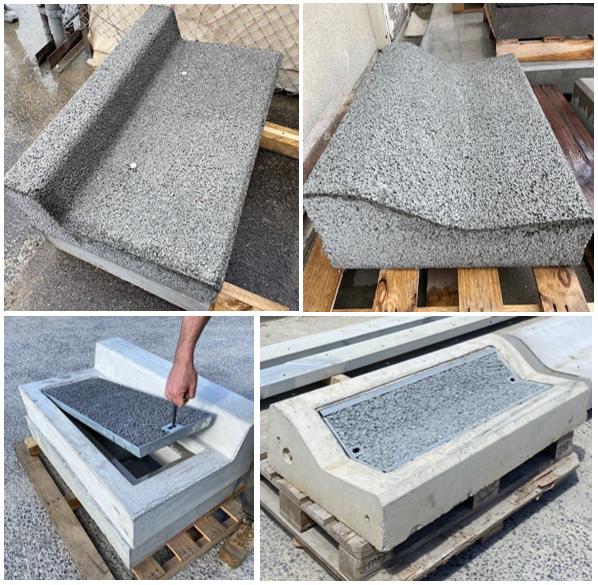
The key differentiator of the Tree Nurturing System™ is its decentralised stormwater management approach, which reduces the negative impacts of conventional drainage systems by a magnitude of scale. Based on this, the Tree NurturingSystem™ can be customised to handle both minor and major rainfall runoff storm events, even that equivalent to a 100-year storm event. This is made possible through the integration of a range of proprietary stormwater management solutions.
This stormwater management capability, which includes runoff retention, distributed detention, and slowing down the water, significantly reduces flood risk, replenishes groundwater systems, and protects downstream water systems, all while maintaining ecosystem health.
A solution for climate adaptation
When implemented across road reserves and other urban or engineered environments, the Tree NurturingSystem™ provides substantial triple bottom line (3BL) sustainability benefits and serves as a potent countermeasure against climate change drivers. These benefits encompass a wide range of environmental and community advantages. They include lessening the impact of flooding, enhancing passive irrigation and the infiltration of stormwater, ensuring consistent soil moisture levels, and lowering surface temperatures to combat urban heat island effects. The system also promotes the flow of oxygen and minerals through soils, boosts biodiversity, and contributes to soil health. It aids in the storage of carbon in the soil, strengthens root biomass and tree stability, and increases the density and coverage of tree canopies, providing more shade. Furthermore, it enhances the health and well-being of the community. By reintroducing passive infiltration, a crucial phase of the natural water cycle, it also mitigates risks to water security.
Four BGI modular variants
Additionally, Blue-Green Infrastructure offers four modular variants of the Tree NurturingSystem™. These variants integrate proprietary modular tank, structural cell, and drainage void systems.


This patent is made, and the Tree Nurturing System™ trade mark is used, under licence from BLUE GREEN INFRASTRUCTURE Pty Ltd ACN 648 262 373
© Copyright BLUE GREEN INFRASTRUCTURE Pty Ltd (ACN 648 262 373)